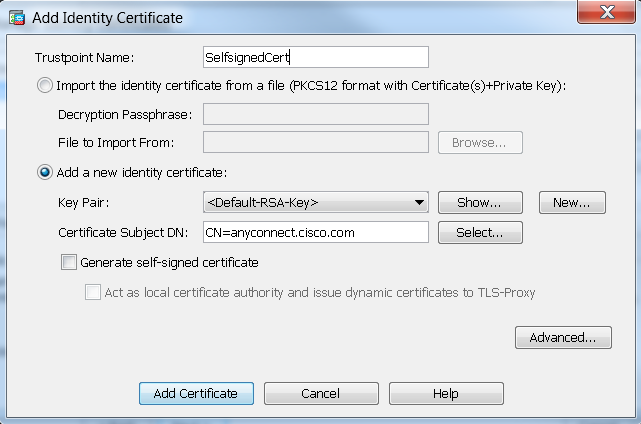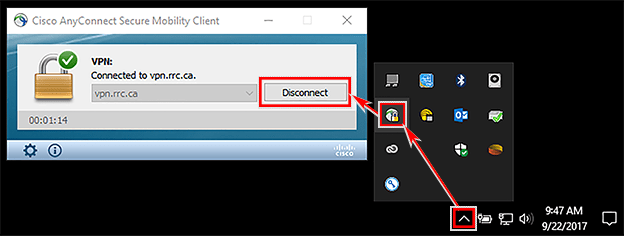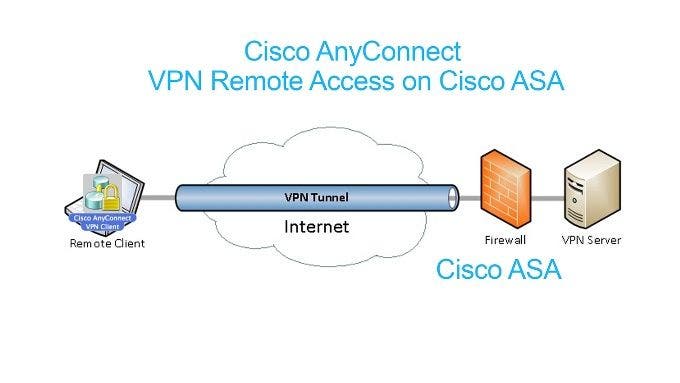Overview
When connected to your AnyConnect VPN session, the AnyConnect VPN icon will be displayed in the system tray (Windows) or task bar (Mac). To view connection details or to disconnect, click the AnyConnect VPN icon and choose Disconnect. Use the dCloud Browser Based Cisco AnyConnect. Connect to the Cisco AnyConnect VPN Client Once Downloaded Windows: Open the Cisco AnyConnect VPN client. Windows 8: On the Start screen, click Cisco AnyConnect Secure Mobility Client. Windows 10: Start All Apps Cisco Cisco AnyConnect Secure Mobility Client.
I am trying to connect to CISCO Anyconnect VPN via python function. I have seen the ways given here: Connect CISCO Anyconnect VPN via bash. But first I have a couple of problems, the first one being new to Python and second being reluctant to use any/very-few third-party modules/libraries other than https. May 05, 2017 From the Windows System Tray, you will see your icon to open CISCO AnyConnect, right-click on this and select Open AnyConnect; From there the CISCO AnyConnect Client will launch a dialog box; In the textbox you will use the IP address that was given to you for VPN access, if you require this please contact our support team to request this. Connect To VPN Server with Cisco AnyConnect from Linux Terminal. If you used the installation method covered in our guide, the vpn script used to connect, disconnect, and check the status of VPN is located in the directory below.
Stanford's VPN allows you to connect to Stanford's network as if you were on campus, making access to restricted services possible. To connect to the VPN from your Windows computer you need to install the Cisco AnyConnect VPN client.
Two types of VPN are available:
- Default Stanford (split-tunnel). When using Stanford's VPN from home, we generally recommend using the Default Stanford split-tunnel VPN. This routes and encrypts all traffic going to Stanford sites and systems through the Stanford network as if you were on campus. All non-Stanford traffic proceeds to its destination directly.
- Full Traffic (non-split-tunnel). This encrypts all internet traffic from your computer but may inadvertently block you from using resources on your local network, such as a networked printer at home. If you are traveling or using wi-fi in an untrusted location like a coffee shop or hotel, you may wish to encrypt all of your internet traffic through the Full Traffic non-split-tunnel VPN to provide an additional layer of security.
You can select the type of VPN you want to use each time you connect to the Stanford Public VPN.
Install the VPN client

- Download the Cisco AnyConnect VPN for Windows installer.
- Double-click the InstallAnyConnect.exe file.
- When a message saying the Cisco AnyConnect client has been installed, click OK.


Connect to the Stanford VPN
See Full List On Cisco.com
- Launch the Cisco AnyConnect Secure Mobility Client client.
If you don't see Cisco AnyConnect Secure Mobility Client in the list of programs, navigate to Cisco > Cisco AnyConnect Secure Mobility Client. - When prompted for a VPN, enter su-vpn.stanford.edu and then click Connect.
- Enter the following information and then click OK:
- Group: select Default Stanford split- tunnel (non-Stanford traffic flows normally on an unencrypted internet connection) or Full Traffic non-split-tunnel (all internet traffic flows through the VPN connection)
- Username: your SUNet ID
- Password: your SUNet ID password
- Next, the prompt for two-step authentication displays. Enter a passcode or enter the number that corresponds to another option(in this example, enter 1 to authenticate using Duo Push to an iPad). Then click Continue.
- You may have to scroll down the list to see all of your options.
- If your only registered authentication method is printed list, hardware token, or Google Authenticator, the menu does not display. Enter a passcode in the Answer field and click Continue.
- Click Accept to connect to the Stanford Public VPN service.
- Once the VPN connection is established, a message displays in the lower-right corner of your screen, informing you that you are now connected to the VPN.
Cisco Secure Desktop (CSD) FAQ
Disconnect from the Stanford VPN
Add Vpn To Cisco Anyconnect
- In the notification area, click the Cisco AnyConnect icon if it is displayed. Otherwise, go to your list of programs and click Cisco AnyConnect Secure Mobility Client.
- At the prompt, click Disconnect.
